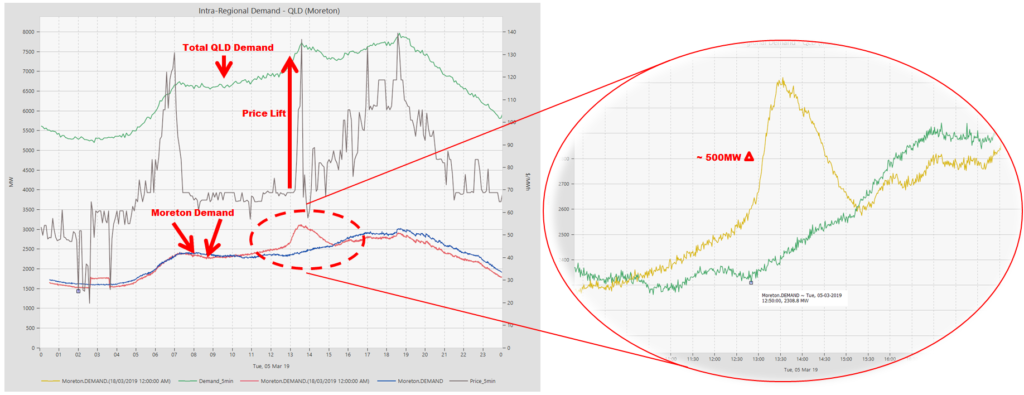By Rob Murphy, Stanwell Energy Trader (Physical Markets)
As solar photovoltaic (PV) systems become more prevalent on the grid, it is interesting to note the impact it can have within the National Electricity Market (NEM).
Take for example Monday 18 March, when thunderstorm activity was active across South East Queensland.
Interestingly, the storm system moved through quite early in the afternoon at about 1:00 pm, when solar activity is typically at its peak.
As solar PV generation is reflected as an offset to demand, the impact on South East Queensland load (Moreton demand) was significant.
As much as 500MW of mostly solar generation came offline at lunchtime and proceeded to come back into service once the storm activity had passed and clear conditions had returned.
When we compare this to a standard Moreton demand shape, like on Tuesday 5 March, this highlights the steep rate-of-change possible on the system as weather conditions change.
This impact can be seen in the overall Queensland demand, with prices reaching over $130/MWh at the peak and then subsequently placing downward pressure on the generation return (i.e. less $60/MWh at 1:55 pm).
Although this spike in price is marginal ($70/MWh), the lift in price could have been higher (up to $300/MWh) if both Wivenhoe (x1 unit) and Braemar Power Station (x2 units) were not generating, or if overall Queensland demand was also significantly higher.
This amounts to a great deal of uncertainty particularly for future summer periods in Queensland, when thunderstorm events occur.
So, what does this mean for the future? Solar will continue to increase as South East Queensland and the rest of the state grows, so swings in demand like this are likely to become more frequent. This produces even further variability in network stability and price outcomes. In other words, watch this space…
The graph below highlights the significant impact Monday’s storm had on both price and demand (click on the graph to see a larger version).

Source: data sourced from AEMO five minute price and demand, and Powerlink one minute intra-regional demand.